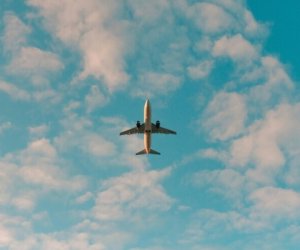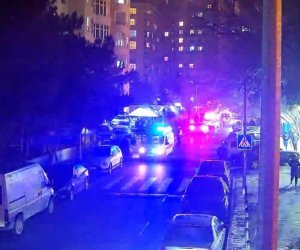Planet appetite: Baku FIA GT World Challenge in Azerbaijan

By Rupert Parker
Sandwiched between Russiaand Iran, at the crossroads of East and West, Azerbaijan has taken advantage ofits oil and is transforming its capital Baku into an attractive modern city, agreat venue for a motor race.
At around six hours flyingtime from London, Baku is not quite a weekend destination but, add a couple ofdays, and it becomes very attractive indeed. There's a spanking new airport,looking like a giant crystal goldfish bowl, and on the way into town thebuildings lining the wide boulevards are all lit up. You get the sense thatthey're putting on a show and it's no accident that the Eurovision Song Contestwas hosted here last year. I'm in town for the final of the FIA GT SeriesChampionship, another way of raising the profile of Baku, particularly as therace will take place through the city streets along the Caspian Sea.
Next day I'm overwhelmed bya skyline of thrusting high rises, in particular the iconic Flame Towers whichdominate the view from every angle. I'm on my way to visit the old city, a stopon the ancient Silk Road, hidden inside medieval walls, on the shores of theCaspian. Its narrow winding streets and mosques and monuments are UNESCOlisted, although much has been reconstructed in recent years. Pride of place isthe Maiden's Tower, right next to the sea and the place where rich noblesstored their valuables in times of war. It's never been invaded, hence itsname, and there's a great view from the top.
Along the seafront runs theBaku Boulevard, a wide space planted with palm trees and home to Soviet eracafes complete with backgammon players. Pleasure boats pull up here and you cantake a cruise, although the waters are murky with oil. Of course it was revenuefrom this black gold which financed the city's first architectural boom in thelate 19th century. Grand buildings, known as Baku Gothic, sprung up all overand include what is now the Azerbaijan History Museum and the Baku MunicipalDuma, both designed by Polish architect Joseph Goslavsky. A prime example ofSoviet architecture is Government House, started in 1938 and dominating theBoulevard like a majestic wedding cake.
Azerbaijan is known as theland of fire because of its oil and gas and a few kilometres outside town isthe Burning Mountain. It sounds grander than it is but gas has been coming outfrom the base of the rock and burning since before the time of Herodotus. Farbetter is the House of Fire, a temple constructed by worshippers of Zoroasteraround the 13th century. The central building, complete with a central burningflame and four chimneys is surrounded by monastic cells, where they've ratherimaginatively erected mannequins doing what the monks are supposed to do. Ofcourse the people are very dark, supposedly blackened by the fire, althoughthese days the flames are provided by gas.
Perhaps the mostinteresting excursion is to the Gobustan rock carvings and the nearby mudvolcanoes of Dashgil. You cross the railway tracks and climb up a dirt road toa deserted post-apocalyptic landscape. All is quiet apart from the belching andfarting of volcanic mud pools bubbling out of cone shaped mounds. Each has aconstant stream of mud running down the sides and, just like lava, itsolidifies as it flows. Beware that when it rains this area turns into deepmire and is completely inaccessible.
Gobustan is home to over 4,000rock carvings dating from 6000 BC which depict people hunting, boating andfishing and even dancing at the Stone Age disco. The locals lived in caveshelters and, when explorer Thor Heyerdahl saw depictions of cane boats, hedecided that the Vikings came from here. Apparently there's a Norse saga aboutOdin arriving on a folding ship from a far land called Ahser, so here was theproof he needed. The Romans also passed through and a centurion carved a firstcentury BC piece of graffiti on the rock with the name of the emperor who,rather disappointingly, wasn't called Kilroy.
So race day dawns brightand sunny and, as I make my way to the pits, I realise the enormity of what isgoing on - apparently it's taken three 747's to transport cars and gear plus 15vintage F1 cars. Crew and journalists number 750, flown in from Paris, Londonand Düsseldorf, with more than 50,000 spectators expected. The 4 km urbancircuit runs the length of the seashore before doubling back to the start andof course all roads have been cordoned off. It makes for a stunning spectacleand the Belgian Audi Club Team WRT are the winners as Stéphane Ortelli (MCO)and Laurens Vanthoor (BEL) take the 2013 FIA GT Series Pro Cup drivers title.
I have a feeling I'm goingto be coming back to Azerbaijan as I'd love to get out of Baku and explore therest of the country. I've already fallen in love with the women who sell thepickles in the bazaars, dressed in their multi-coloured shawls and matchingheadgear. You get the impression that they don't see too many tourists so I canimagine what it must be like to travel in the regions. People are enormouslywarm and friendly - I'll never forget the woman who sat next to me at thecircus and gave me her bun just as the lion tamer was sticking his head insidethe animal's mouth. As I took a bite, I was slightly disappointed that the liondidn't do the same - it would have been different in Roman times.
(http://www.huffingtonpost.co.uk)
ANN.Az
Latest news 
More news 



































 Photo
Photo 



 Video
Video 

